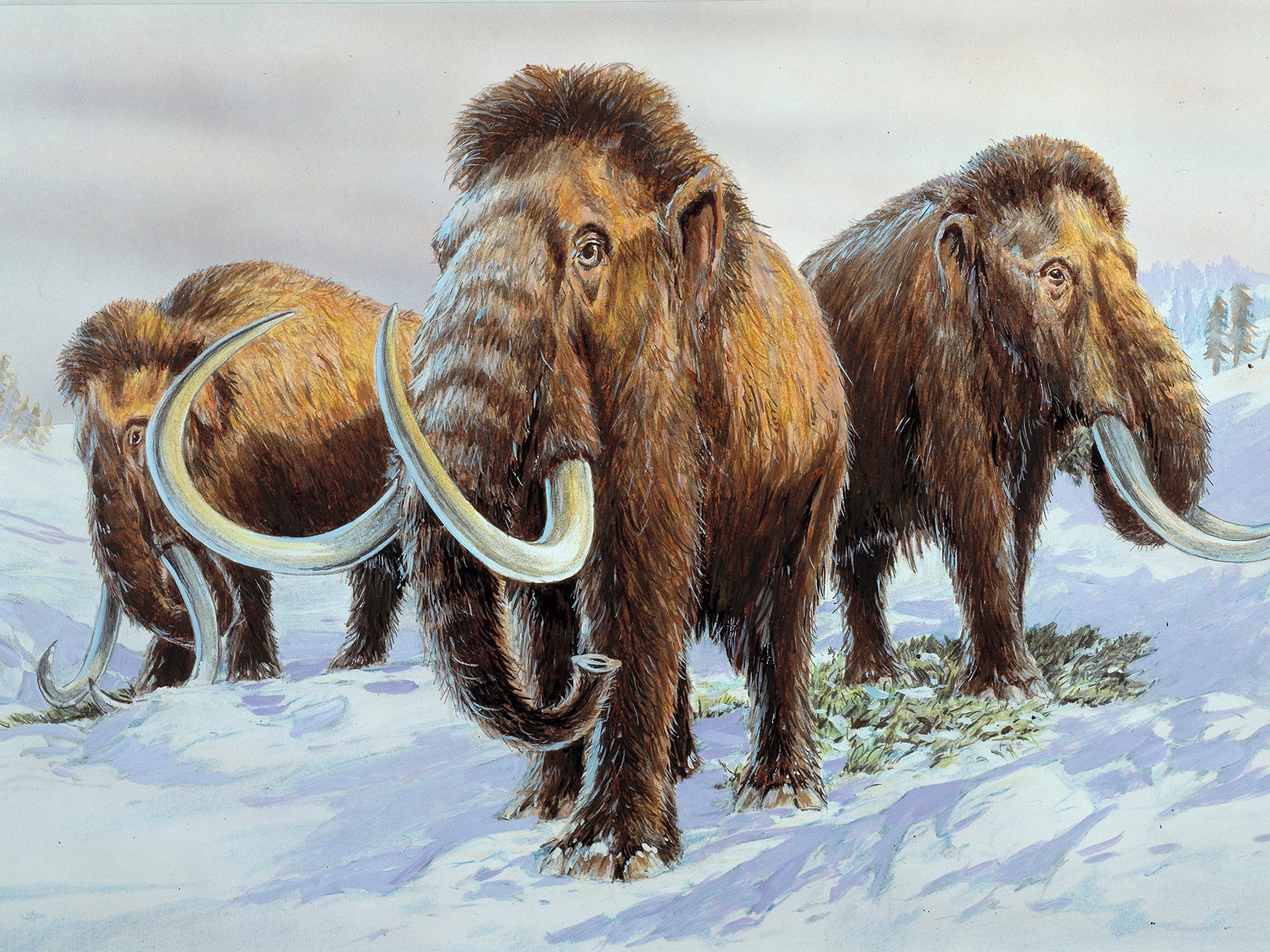Woolly mammoths’ genes decoded, bringing clues to how they died out and how they could come back
Study means that the complete genetic template for putting a mammoth together is now available

Researchers have decoded the DNA of two woolly mammoths, giving further clues to how they died out and leaving us with full instructions of how to put one back together again.
The research found that woolly mammoths, which came about around 700,000 years ago, suffered two huge population shocks that each significantly reduced the number of them around. Eventually, mammoths died out after the remaining ones lived on a remote island where they are thought to have declined as a result of inbreeding that led to genetic problems.
The researchers studied two mammoths, one a calf that lived about 45,000 years old and was discovered in Siberia, and a tooth from a mammoth that lived in that last population on an island off the Russian mainland, 4,300 years ago.
The mammoths appear to have seen their population crash about 280,000 years ago, but the population recovered after that. But another hit about 12,000 years ago, towards the end of the ice age, and that left only about 300 to 1,000 mammoths on the Earth.
The remaining mammoths, from which the tooth was taken, lived on the island for about 6,000 years after the rest of the mammoths had died. The low number of mammoths left there were inbred and likely died out partly as a result.
As well as providing information about the life of the species, the new research could provide clues to how to resurrect it. But Love Dalen, who worked on the study, said that he wasn’t sure it would be a good idea to use the information that way.
Woolly mammoth for sale
Show all 8"Our genomes bring us one critical step closer to re-creating a mammoth,” he wrote in an email to NBC News. “I think it would be cool if it could be done, but I'm not sure it should be done."
The research team came from Harvard, where a different set of researchers pasted mammoth DNA into an elephant’s genetic code earlier this year. That once again raised debate about whether the mission to bring the mammoth back was practically viable and whether it should be attempted if it is.
Attempting to change elephant DNA to help one give birth to a mammoth carries risks for the elephant and could not be worth the suffering that it would cause to her, scientists have warned. And bringing mammoths back could encourage the idea that extinction is an attempt that species can recover from, or distract from efforts to keep existing animals around, others have said.
Subscribe to Independent Premium to bookmark this article
Want to bookmark your favourite articles and stories to read or reference later? Start your Independent Premium subscription today.

Join our commenting forum
Join thought-provoking conversations, follow other Independent readers and see their replies